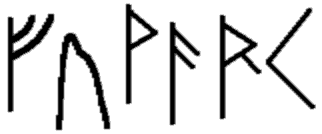
Critiqies and Editing 101
Storytelling Guidelines and Writing R.O.T.
Writer's Synopsis





If you ask any author about writing a synopsis, they will silently curse for awhile before telling you that they hate writing them. Why the universal hatred of the synopsis? No one really understands them and we were never taught the art form in schools.
We know from high school the basics of outlines and summaries. The purpose for both those forms was to demonstrate your ability to understand what you were reading or writing. Details had to be given to show your depth of understanding. When authors are asked for a one-page or even a four-page synopsis, the skills of high school outlining and summarization come to the foreground. Using those skills, it is virtually impossible to condense a novel into a single page. But the writer's synopsis is different from the summaries of high school. If you look up synopsis in the dictionary, you will find that it is described as a general summary or even an abstract summary of the story. We are looking at a completely different animal from what we have learned in the past.
It is easier to see what a synopsis is by looking at how an agent or publisher would use it. The publisher looks at the synopsis with a few pages of the manuscript to decide if it is worth their time to read the whole story. What the publisher is looking for is an indication that the novel is complete with at least one strong theme running from the beginning to the middle and through to the end. They need just enough details about the story to decide if it will fit in the market niche that they interested in. Finally, they are looking for some idea about the author's writing style and how he/she develops the story. If the synopsis and the sample pages answer these questions, the publisher should ask for the complete manuscript.
So the author, writing the synopsis, needs to think of it as a sales tool or an advertisement to get the publisher to consider reading the whole manuscript. The author is not trying to summarize the whole story. He/she is trying to create a one page ad promoting the need for the publisher to read the whole manuscript. You could think of a synopsis as a story about your story not just a summary of it. A good synopsis doesn't even have to be a complete summary of your story. It can be an abstract telling the publisher what genre or market the story will fit in and what style it is written in. You have to answer the questions the publisher is looking for including proof that your story has a beginning, middle, and end but how you do it and what details you choose to leave in are up to you.
We see something similar to a synopsis in the movie theaters. The trailers about upcoming films are selling you on the idea of watching the film when it comes out in a few weeks or months. The main difference is that instead of selling the story to the audience you are selling it to someone who will be producing it so you need to add information about how the story will end. A good movie trailer will tell you the story but not in the same way the finished movie will. It is an advertisement.
A one-page synopsis is just an expansion of the paragraph or two you put in your cover letter about your story. If you are asked for a multiple page summary, you can get into more details about the development of your story. But remember that this is an advertisement promoting the reading of your complete manuscript. Unless the synopsis is interesting and/or short, it will not sell the publisher on reading your whole story.
Back to the start of the page